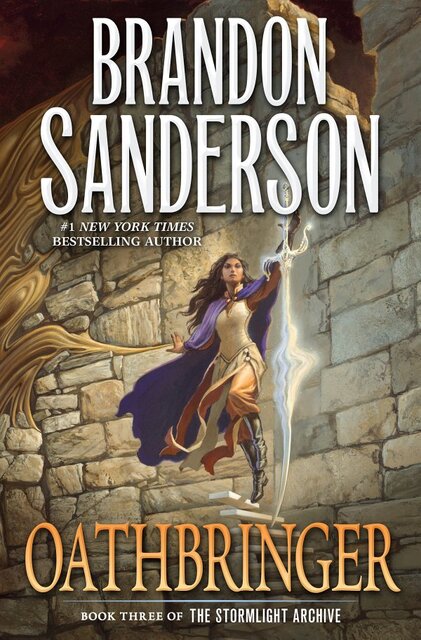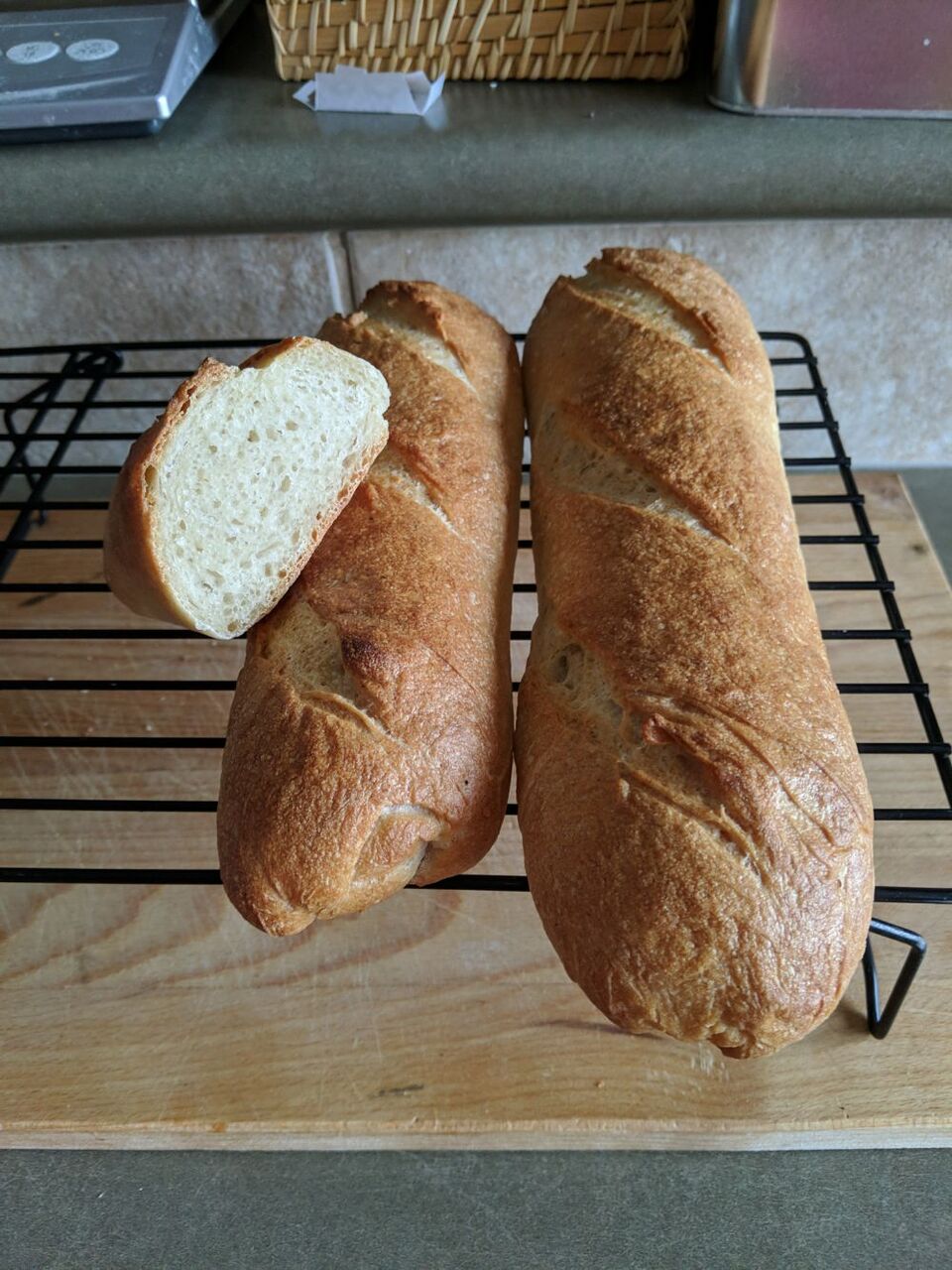- (https://b-ark.ca/ksKKwg)
I’m riding in the 2025 Enbridge Tour Alberta for Cancer, raising money for the Alberta Cancer Foundation, and have so far raised $2,744, exceeding my $2,500 goal and surpassing my 2024 effort!
Help me by donating here
And remember, by donating you earn a chance to win a pair of hand knitted socks!
- (https://b-ark.ca/4QSWw2)
Currently reading</span> Oathbringer
<span>(<a href="https://en.wikipedia.org/wiki/The_Stormlight_Archive">The Stormlight Archive</a> #3.0)</span>by
(9780765326379) </span>
- (https://b-ark.ca/MOc_A6)
Finished </span> <a class="p-name" href="https://en.wikipedia.org/wiki/Words_of_Radiance">Words of Radiance</a> <span>(<a href="https://en.wikipedia.org/wiki/The_Stormlight_Archive">The Stormlight Archive</a> #2.0)</span>by
(9781429949620) </span>
Review: Words of Radiance
Review of Words of Radiance (The Stormlight Archive #2.0) by Brandon Sanderson (9781429949620)★★★★
(https://b-ark.ca/Ug_CC_)Book two of a two part pentology, Words of Radiance follows directly from The Way of Kings, in plot, structure, and pacing, but provides a satisfying climax for the first major act of this epic series.

Expected by his enemies to die the miserable death of a military slave, Kaladin survived to be given command of the royal bodyguards, a controversial first for a low-status "darkeyes." Now he must protect the king and Dalinar from every common peril as well as the distinctly uncommon threat of the Assassin, all while secretly struggling to master remarkable new powers that are somehow linked to his honorspren, Syl.
The Assassin, Szeth, is active again, murdering rulers all over the world of Roshar, using his baffling powers to thwart every bodyguard and elude all pursuers. Among his prime targets is Highprince Dalinar, widely considered the power behind the Alethi throne. His leading role in the war would seem reason enough, but the Assassin's master has much deeper motives.
Brilliant but troubled Shallan strives along a parallel path. Despite being broken in ways she refuses to acknowledge, she bears a terrible burden: to somehow prevent the return of the legendary Voidbringers and the civilization-ending Desolation that will follow. The secrets she needs can be found at the Shattered Plains, but just arriving there proves more difficult than she could have imagined.
Meanwhile, at the heart of the Shattered Plains, the Parshendi are making an epochal decision. Hard pressed by years of Alethi attacks, their numbers ever shrinking, they are convinced by their war leader, Eshonai, to risk everything on a desperate gamble with the very supernatural forces they once fled. The possible consequences for Parshendi and humans alike, indeed, for Roshar itself, are as dangerous as they are incalculable.
This review is coming many days after I finished this book, and having already started Oathbringer, I have to admit the plot is already blurring in my mind. But, I’ll do my best!
And, of course, it’s already been nearly a week since I started this review, so the book is blurring even more in my mind… oh well.
Continue reading...- (https://b-ark.ca/4ICegG)
One week into upgrading my 5th gen X1 Carbon from @ubuntu 18.04 to 20.04 and it’s darn near flawless! Thank you so much to everyone involved. I was delighted when I was able to wipe Windows 10 from this machine and I’ve never looked back.
- (https://b-ark.ca/8Wog8U)
First crack at Peter Reinhart’s Italian bread from BBA, in pull apart roll form. Turned out great!
DIY eReader News with RSS
Did you know Calibre can turn an RSS feed into an eBook? I didnt! It turns out Calibre, tt-rss, and Wallabag make it possible to roll your own news that you can read right on your eReader!
I’ve mentioned this before, but I’ll mention it again: I’m a big fan of RSS. For the uninitiated, RSS is a way to subscribe to a feed of content from a website and consume it in a reader or other tool of your choice. And despite claims that it’s dying out, I still manage to have more content in my feed reader than I possibly have time to consume.
For a long time I used Feedly as my RSS reader of choice. But back in October I decided to switch to tt-rss, a self-hosted RSS feed reading service that works on both browsers and through a mobile app. Then, in a fit of boredom, I used some self-hosted home automation tools to incorporate email newsletters into my feed. Meanwhile, I also decided to stand up an instance of Wallabag, a self-hosted website bookmarking service.
But I ran across a problem: with all this content at my fingertips, I started to fall behind, particularly on all those long-form articles and newsletters I want to read.
And then I discovered Calibre’s news scraping features and a solution presented itself!
Continue reading...- (https://b-ark.ca/wU_S4o)
Getting back on the bread train. It’s been a while, but on my second attempt I think I’m shaking the rust off!
- (https://b-ark.ca/Qkkowg)
Upside to building a keyboard: I ended up with the skills to fix the broken tilde on the WASD mechanical I have at home. Cause: fried diode after a massive static shock.
- (https://b-ark.ca/Sy_8ee)
I’ve just discovered KDE Connect. Combined with GSConnect for Gnome, it enables remote control of my phone from my Linux laptop and vice versa, and replaces Pushbullet for me. Very nice work!
- (https://b-ark.ca/sgaoEo)
Updated my Nintendo DS port of NetHack to upstream version 3.6.6! Why? Because I can, and I had some time over my lunch break, that’s why!
- (https://b-ark.ca/eaioyc)
The ai thought leader on Twitter is now one of my favourite things (and also makes me want to play around with GPT2)…
- (https://b-ark.ca/CQyUIs)
Currently reading</span> Words of Radiance
<span>(<a href="https://en.wikipedia.org/wiki/The_Stormlight_Archive">The Stormlight Archive</a> #2.0)</span>by
(9781429949620) </span>
Review: The Way of Kings
Review of The Way of Kings (The Stormlight Archive #1.0) by Brandon Sanderson (9780765326355)★★★★
(https://b-ark.ca/YsGa0A)The first of a two part pentology, The Way of Kings is slow burn high fantasy that mixes standard tropes with a deeper mystery to create something fun and compelling enough to justify the investment.

Roshar is a world of stone and storms. Uncanny tempests of incredible power sweep across the rocky terrain so frequently that they have shaped ecology and civilization alike. Animals hide in shells, trees pull in branches, and grass retracts into the soilless ground. Cities are built only where the topography offers shelter.
It has been centuries since the fall of the ten consecrated orders known as the Knights Radiant, but their Shardblades and Shardplate remain: mystical swords and suits of armor that transform ordinary men into near-invincible warriors. Men trade kingdoms for Shardblades. Wars were fought for them, and won by them.
One such war rages on a ruined landscape called the Shattered Plains. There, Kaladin, who traded his medical apprenticeship for a spear to protect his little brother, has been reduced to slavery. In a war that makes no sense, where ten armies fight separately against a single foe, he struggles to save his men and to fathom the leaders who consider them expendable.
Brightlord Dalinar Kholin commands one of those other armies. Like his brother, the late king, he is fascinated by an ancient text called The Way of Kings. Troubled by over-powering visions of ancient times and the Knights Radiant, he has begun to doubt his own sanity.
Across the ocean, an untried young woman named Shallan seeks to train under an eminent scholar and notorious heretic, Dalinar's niece, Jasnah. Though she genuinely loves learning, Shallan's motives are less than pure. As she plans a daring theft, her research for Jasnah hints at secrets of the Knights Radiant and the true cause of the war.
The result of over ten years of planning, writing, and world-building, The Way of Kings is but the opening movement of the Stormlight Archive, a bold masterpiece in the making.
I was a bit reticent to begin The Stormlight Archive, if only due to the massive investment I knew it would entail. Sanderson is a prolific writer, and the volumes in the Stormlight Archive are… substantial. And there’s going to be ten of them. Oh, and he’s only just finishing book four now. So, as with The Expanse, I knew I’d find myself waiting.
However, given I absolutely loved the first Mistborn trilogy, I knew I would probably enjoy Sanderson’s writing and world building, and it’s been a while since I’ve been hooked by a large scale, high-fantasy series (and before you ask, no, I haven’t started A Song of Ice and Fire… someday!), so I decided to take the plunge.
The Way of Kings is a long, slow burner that, I think, is better thought of as a set of four interwoven novellas–Kaladin and the Bridgemen, Adolin and Dalinar, Jasnah and Shallan, and Szeth–set against the backdrop of a grand mystery of the past and a prophesied cataclysm to come. This structure means the book requires a bit of patience from the reader, as rather than taking us through a single character journey Sanderson must set up and execute multiple plots simultaneously. However, I found the overall setup sufficiently interesting, and the final third compelling enough, that I’m definitely going to be continuing on to book two.
Continue reading...- (https://b-ark.ca/mU60Ck)
Finished </span> <a class="p-name" href="https://en.wikipedia.org/wiki/The_Way_of_Kings">The Way of Kings</a> <span>(<a href="https://en.wikipedia.org/wiki/The_Stormlight_Archive">The Stormlight Archive</a> #1.0)</span>by
(9780765326355) </span>
- (https://b-ark.ca/gcoEck)
More IoT devices bite the dust. I’ve avoided “smart” devices for a lot of reasons–lack of: security, control, cost, complexity, repairability–but rapid obsolescence is also a huge factor.
RSS: A Better News Feed
Social media algorithms care only that you’re engaged. They exist to advertise. Everything else is a side-effect. RSS lets you ditch the machine and build your own feed from trusted sources.
Quite a few years ago, for personal reasons, I decided to drop out of major social media platforms. This was just at the time when those platforms truly started to take over the world, so the whole thing more or less passed me by as I watched from the sidelines. As a result, it wasn’t until very recently that I came to appreciate just how much these platforms have become the primary way that people run across content online.
Of course, this really shouldn’t be surprising. Once upon a time, the internet was made up of an untold number of websites, big and small. And this posed a real problem of content discovery. Sure, we managed. We managed with search engines, and bookmarks, and web portals, and other ad hoc technologies. But it was a huge pain.
Today, this same kind of content discovery is done on social media platforms, with content pushed to the consumer by machine learning algorithms that optimize for “engagement”, which is a technical term for “time spent on the service”.
On its face this would seem like a good thing! After all, if you’re engaged, that must mean you’re delighted by what you see!
But the reality is a lot more complicated. Yes, certainly the things that delight us will keep us engaged. But so do the things that make us outraged, or offended, or jealous. And the algorithm can’t tell the difference. So whether you’re clicking on a link because you want to see a picture of a large cat in a small box, or you want to read an outrageous article about how the world is really flat, it’s all the same to the machine.
The result is an algorithmic filter bubble that often serves to misinform, usually while making us miserable.
On the other hand, those algorithms really do provide a useful function: They push interesting content to us so we don’t have to go and seek it out. The problem is, we have no control over how they function.
Well, as you can probably guess, I’m here to tell you that there is an alternative, and it’s a technology that’s almost as old as the web itself: RSS.
Continue reading...


